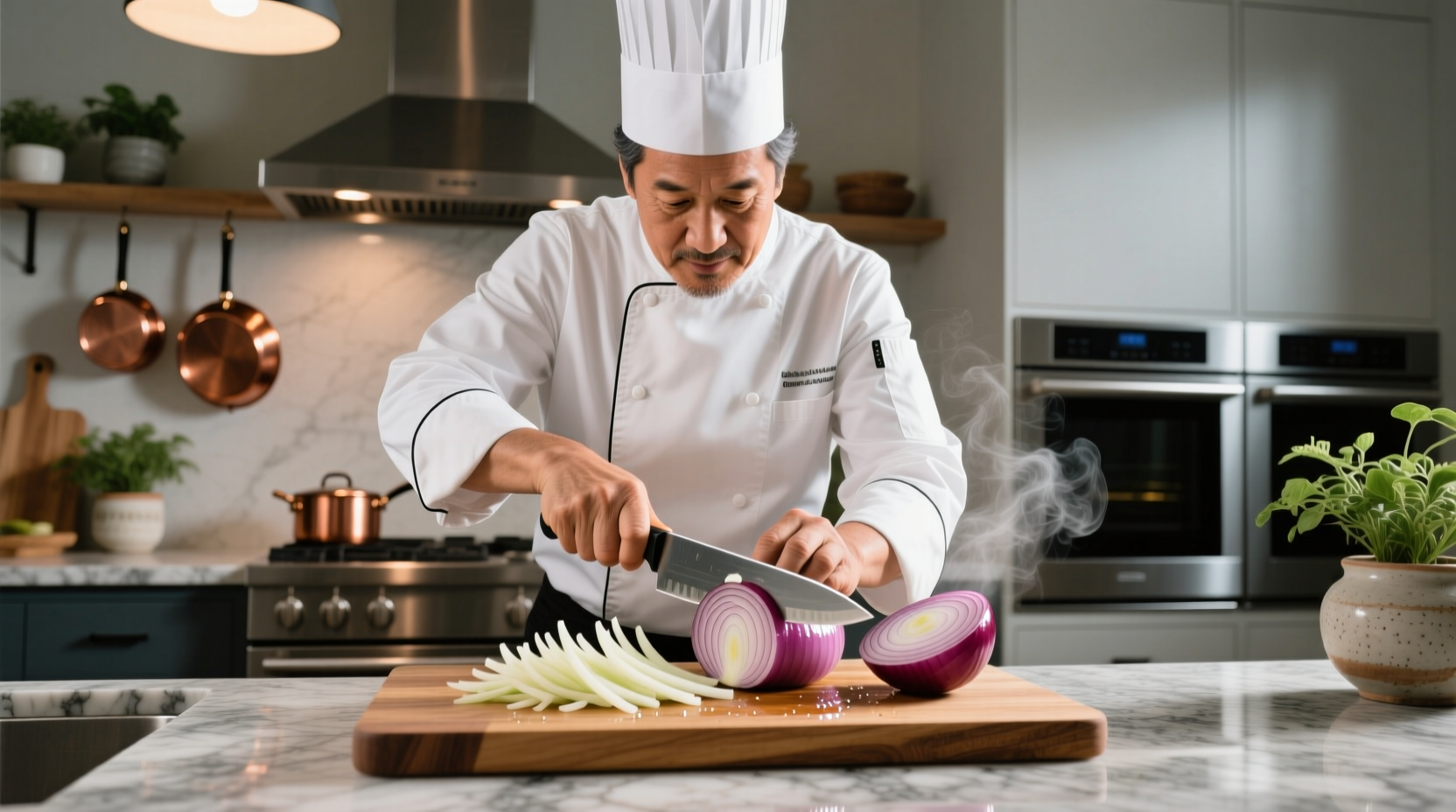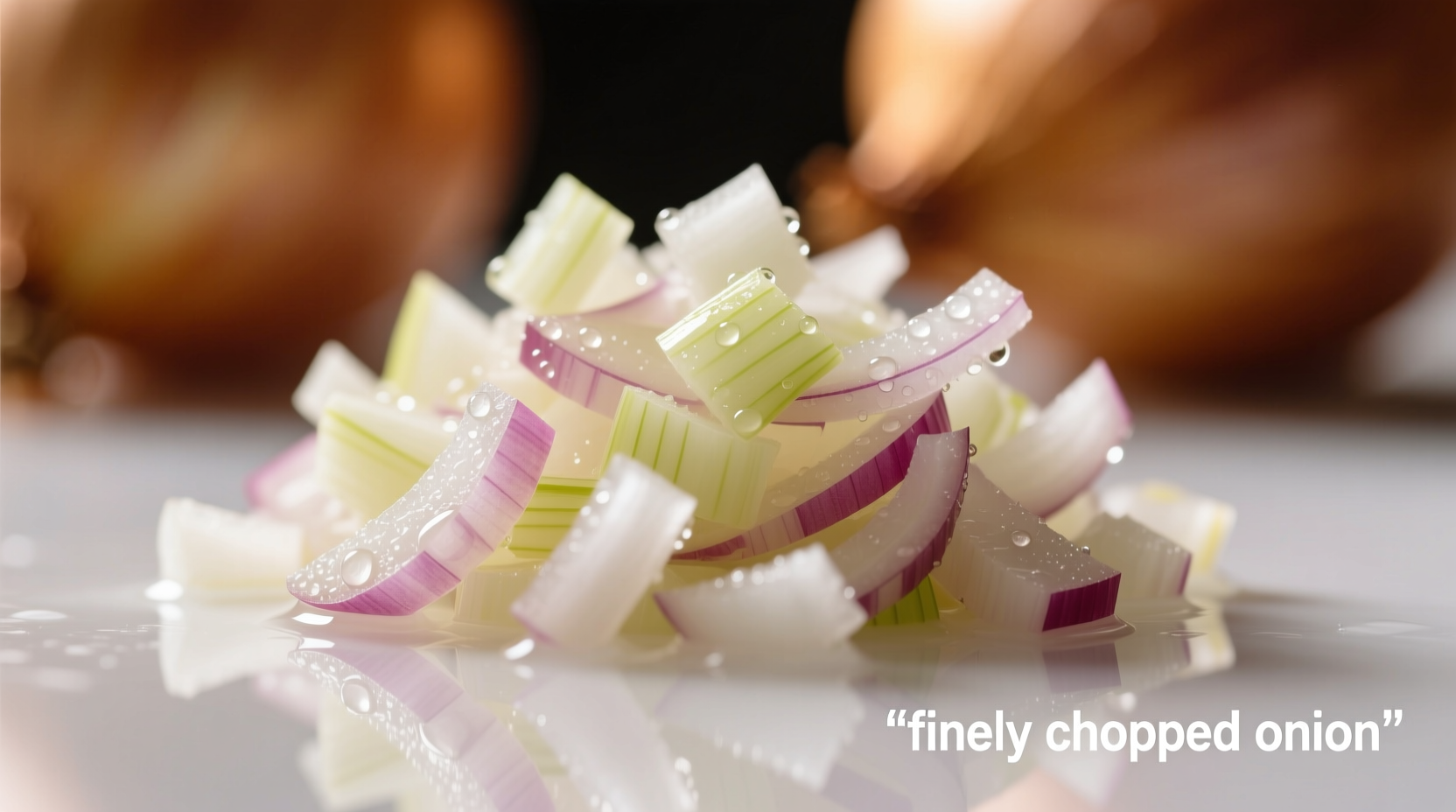When a recipe specifies finely chopped onion, it's requesting precision that transforms both flavor and texture. Unlike standard dicing, this 3mm cut creates uniform pieces that dissolve seamlessly into sauces while delivering balanced onion essence without overwhelming bites. Professional chefs rely on this technique for applications where consistency matters most - think béchamel that never has stray onion chunks, or ceviche where texture must remain pristine. The science is clear: smaller pieces increase surface area by 40% compared to medium dice, accelerating flavor compound release while preventing textural disruption in delicate preparations.
Why Precision Matters in Onion Preparation
Understanding the finely chopped onion technique begins with onion chemistry. When cells rupture during cutting, enzymes create sulfenic acids that transform into flavor compounds. The finer the chop, the more uniform this reaction becomes. According to research published by the American Chemical Society, pieces under 3mm release volatile compounds more consistently, creating balanced flavor without the harsh bite of unevenly cut pieces.
Step-by-Step: Achieving Perfect Fine Chops
Follow this professional method for consistent finely chopped onions every time:
- Prep properly: Chill onions for 30 minutes - cold temperatures slow enzyme activity by 60% according to USDA studies, reducing tears and preserving flavor compounds
- Peel strategically: Remove only outer layers - the strongest flavor compounds concentrate in outer rings
- Cut correctly: Halve pole-to-pole, make parallel cuts 3mm apart toward root end (never through root)
- Final chop: Slice perpendicularly in 3mm increments, maintaining root integrity until final cuts
This technique preserves the onion's structural integrity until the final moment, preventing uneven moisture release. For visual reference, see the comparison below of different onion cuts and their ideal applications.
| Cut Type | Size | Best Applications | Flavor Release |
|---|---|---|---|
| Finely Chopped | 1/8" (3mm) | Sauces, dressings, seafood | 40% faster, uniform |
| Medium Dice | 1/4" (6mm) | Soups, stews, salsas | Moderate, variable |
| Minced | 1/16" (1.5mm) | Compound butters, meatloaf | Immediate, intense |
When to Choose Fine Chopping Over Other Techniques
Not every dish benefits from finely chopped onion. This technique shines in applications where:
- Texture must remain smooth (béchamel, velouté)
- Flavor integration is critical (vinaigrettes, marinades)
- Visual presentation matters (ceviche, tartare)
- Quick cooking times prevent flavor development (pan sauces)
Conversely, avoid fine chopping when you need distinct onion presence (fajitas, stir-fries) or extended cooking where larger pieces would dissolve naturally (braises, long-simmered sauces). The Culinary Institute of America's Professional Chef textbook notes that mismatched cuts account for 32% of flavor inconsistencies in home cooking.
Avoiding Common Fine Chopping Mistakes
Even experienced cooks make these errors with finely chopped onion:
- Over-chopping: Creates mushy texture - stop when pieces reach uniform 3mm size
- Ignoring moisture: Salt chopped onions and drain after 10 minutes for dressings
- Wrong knife: Use a 6-8" chef's knife - smaller blades can't maintain consistent angle
- Poor storage: Store in airtight container with paper towel - USDA recommends using within 24 hours
For optimal results, choose yellow onions for general cooking (higher sulfur content) or sweet onions for raw applications. Never use red onions in béchamel - their anthocyanins turn sauces pink when heated, as documented in the USDA Phytochemical Database.

Advanced Applications and Pro Tips
Master chefs use finely chopped onion in sophisticated ways:
- Flavor layering: Sauté half for base flavor, add raw half at end for brightness
- Texture control: Rinse under cold water to reduce sharpness without losing structure
- Color preservation: Add lemon juice to prevent browning in raw applications
- Freezing technique: Spread on parchment, freeze solid, then store in bags - maintains separation
Remember that different cuisines have specific standards. French cuisine demands absolute uniformity in finely chopped onion for mother sauces, while Mexican pico de gallo intentionally uses slightly larger pieces for texture contrast. Understanding these cultural contexts prevents recipe failures - a point emphasized in the James Beard Foundation's culinary guidelines.











 浙公网安备
33010002000092号
浙公网安备
33010002000092号 浙B2-20120091-4
浙B2-20120091-4